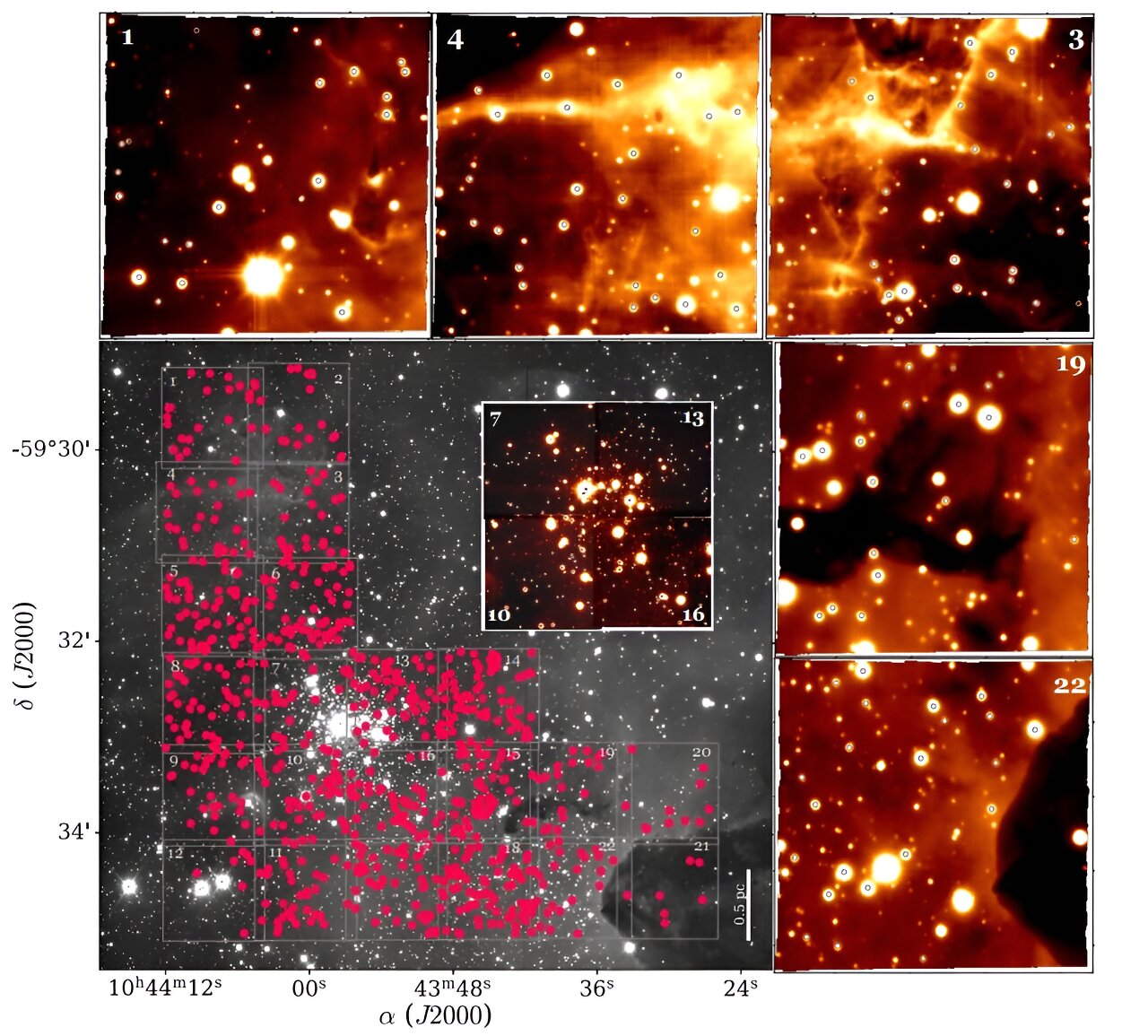Using the Very Large Telescope (VLT), European astronomers have performed spectroscopic observations of an open cluster known as Trumpler 14. Results of the observational campaign, published September 25 on the pre-print server arXiv, shed more light on the properties of young low-mass stars in this cluster.
Open clusters (OCs), formed from the same giant molecular cloud, are groups of stars loosely gravitationally bound to each other. To date, more than 1,000 of them have been discovered in the Milky Way galaxy. Expanding the list of known galactic open clusters and studying them in detail could be crucial for improving our understanding of the formation and evolution of our galaxy.
At a distance of some 9,000 light years from the Earth, Trumpler 14 (or Tr 14 for short) is a Galactic OC located in the Carina Nebula. It has a mass of approximately 4,300 solar masses, diameter of six light years, and is estimated to be about 1 million years old. Therefore, it is one of the most massive, young, and compact clusters in the Carina Nebula Complex (CNC).
A team of astronomers led by Dominika Itrich of the European Southern Observatory (ESO) has employed ESO’s VLT in order to explore young low-mass stars in Trumpler 14. Observations were carried out in 2016 with the Multi Unit Spectroscopic Explorer (MUSE), a second generation integral field unit (IFU) instrument on VLT.
The team investigated 780 stars in Trumpler 14, obtaining spectral and stellar properties for 717 of them. It turned out that 339 stars in the sample are of spectral type K, and 269 were classified as M-type stars. The remaining objects are mostly late G-type stars.
2023-10-04 07:00:04
Original from phys.org



















